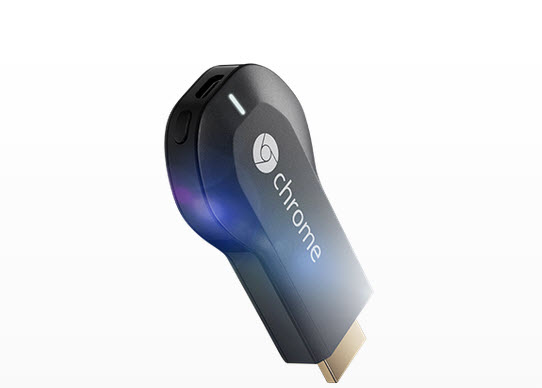The limitations of Google’s Chromecast device
I have to admit that I was curious when I first heard about Chromecast and how some people used the device to play Internet or local videos stored on the computer on a television.
While I do not watch a lot of TV, I do watch the occasional YouTube video or TV show on the PC. That's fine most of the time but there are situations where I which I could stream videos from my PC or the Internet directly to the television instead.
When I was ill with the flu for instance, I could not watch Internet TV because I had no Chromecast or comparable device at the time which meant that I had to rely on German TV (bad bad bad) and discs.
I decided to get a Chromecast and it finally arrived. The device costs less than 40€ which I think is acceptable even if it turned out that it does not support all the features that I would like it to support.
Setup itself was a breeze. I connected the Chromecast to a HDMI port of the television, downloaded the official Chromecast applicationfor Android and used it to configure the device.

It was up in no time and I could play the first YouTube video on the television just to make sure that everything worked out fine.
While that worked fine, I quickly noticed several limitations of the device:
- My initial idea was to use it to stream from my desktop PC to my television. That's however not possible as my desktop PC does not support Wi-Fi. While I could add a Wi-Fi card or adapter to it, it feels like too much work just for the sake of streaming the occasional movie or video to the TV. Update: Streaming from a device without Wi-Fi works, but only if you have set up the Chromecast once using a wireless device, e.g. your Android phone, and if the Chromecast and the PC are connected to the same router and use the same subnet. You need this extension for Chrome.
- I can use my laptop for the streaming though and this works, but it means that I have to copy the video files to the laptop if I want to play a local copy. Using the laptop does have advantages though, especially if PC and television are not in the same room as you can manage both devices in the same room then.
- As far as local video playback is concerned, support is limited, at least when you use the Chrome browser to stream the contents. There are apps such as BubbleUPnP that improve that but the good ones are not free usually and if they are free, they come with ads. There is also Videostream for Google Chromecast that you can install to play additional media types.
- There is no option to interact with the videos on the television directly. You always need to use another device to do so. This also means that the Chromecast on its own does not do anything.
- Chromecast requires its own power source, it does not get power from HDMI.
As far as good things are concerned:
- My Motorola Moto G Android phone can stream most videos without any issues to the Chromecast.
- Support for major video and audio sites are provided in form of applications. There are apps for Netflix, YouTube, Hulu as well as several generic apps that allow you to stream more or less any type of video to your TV. Many apps are however limited to certain regions only, with a strong concentration on the USA.
- You can plug the Chromecast into audio receives that support HDMI.
For the price, it is a fine device even though its use -- in my case -- is somewhat limited right now. Still, I can use it for many different purposes and while it lacks some that I wish it would support, you cannot really do much wrong when it comes to the device considering the price it is offered for.
This article was first seen on ComTek's "TekBits" Technology News

- Log in to post comments